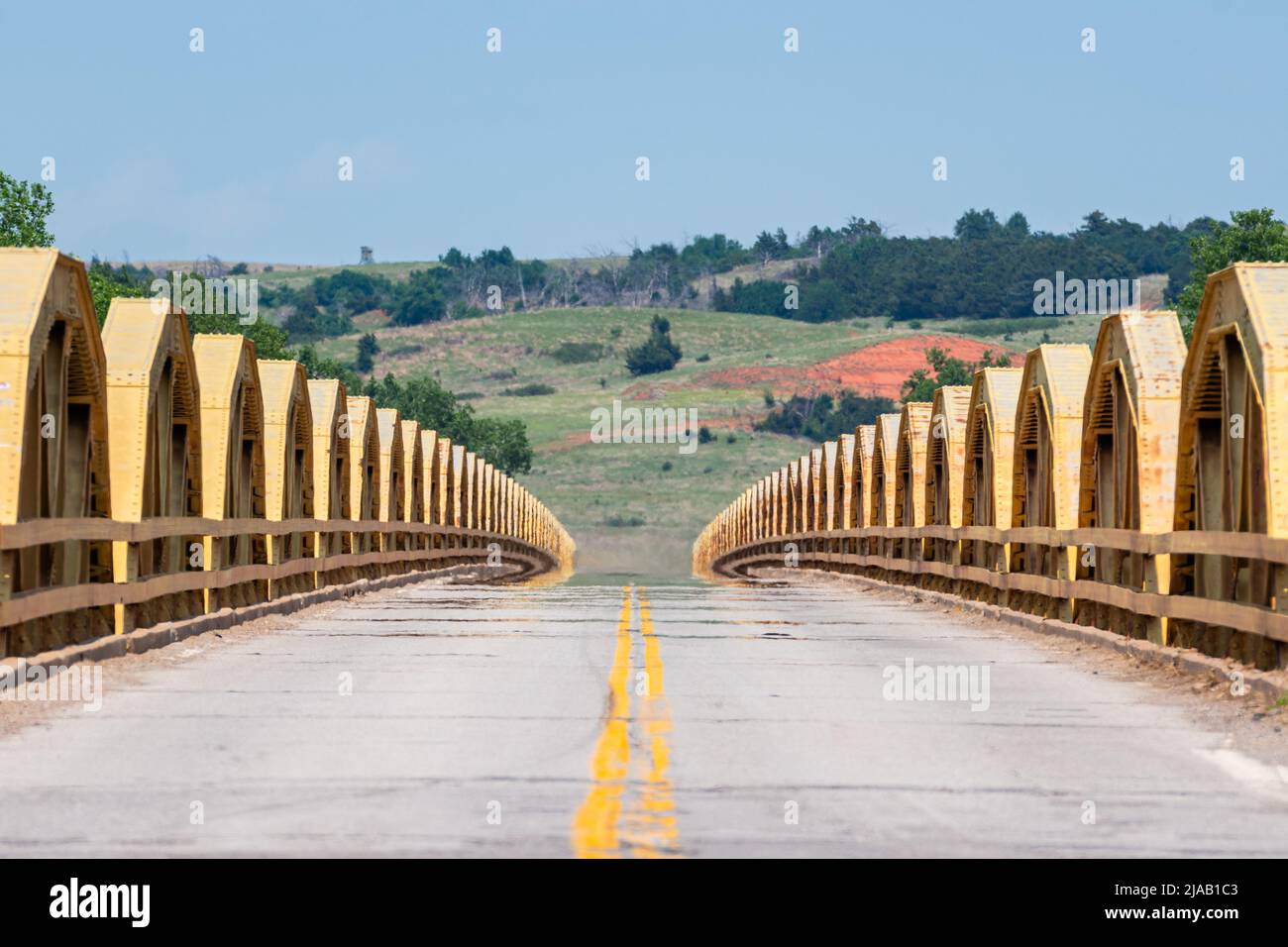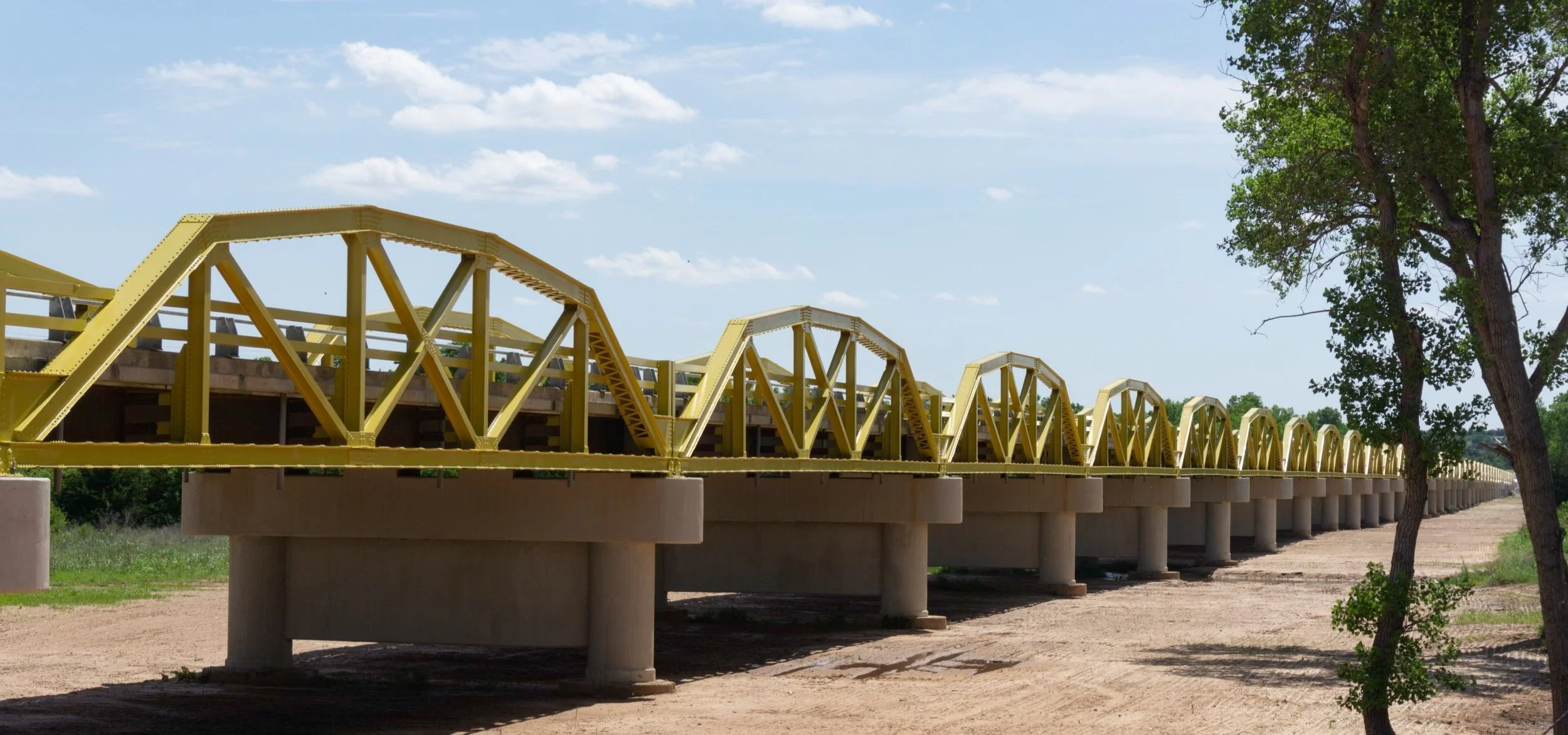
The Enduring Arches of Bridgeport: Where Route 66 Crosses Time
Nestled deep within the heart of Oklahoma, where the vast, undulating plains meet the meandering Canadian River, lies a quiet testament to American resilience and ingenuity: Bridgeport. It’s not a bustling metropolis, nor a sprawling suburb, but a blink-and-you-miss-it dot on the map, a spectral whisper of the past that clings to the present. Yet, for those who seek the soul of the Mother Road, or for anyone who understands the profound stories held within aging steel and concrete, Bridgeport is not merely a place; it is a destination, an enduring monument to a bygone era.
Its fame, almost entirely, rests upon a single, magnificent structure: the Bridgeport Bridge. This isn’t just any bridge. It is a venerable, multi-span pony truss bridge, a colossal undertaking for its time, stretching over three-quarters of a mile across the wide, often unpredictable Canadian River. Built in 1933, at the height of the Great Depression, it wasn’t just a feat of engineering; it was a symbol of hope, a tangible link forged in a time of despair, connecting disparate communities and, most importantly, carrying the legendary U.S. Route 66 across one of its most significant natural barriers.
To understand Bridgeport, one must first understand the bridge, and to understand the bridge, one must grasp the mythos of Route 66. Known affectionately as "The Mother Road," Route 66 was more than just asphalt and concrete; it was America’s artery of dreams, a ribbon of hope for those fleeing the Dust Bowl, a pathway to opportunity for adventurers, and a scenic route for vacationers seeking the romance of the open road. From Chicago to Santa Monica, it wound its way through eight states, each mile etched with stories of perseverance, aspiration, and the relentless pursuit of the American dream.

Bridgeport, Oklahoma, found itself squarely on this iconic path. Before the bridge’s construction, travelers often faced treacherous river crossings, sometimes at the mercy of ferries or makeshift fords. The Canadian River, despite its benign name, could be a formidable obstacle, prone to sudden floods that swallowed roads and isolated communities. The need for a permanent, reliable crossing was paramount, especially as traffic on the newly designated Route 66 began to swell.
The solution came in the form of an ambitious project: a series of 38 steel pony trusses, each supported by concrete piers, stretching an impressive 3,944 feet. At the time of its completion, it was the longest bridge on Oklahoma’s stretch of Route 66, a marvel of modern engineering that cost an estimated $1.2 million – a staggering sum in the early 1930s. Its design, characterized by the distinctive open top of the pony truss, allowed for a lighter, yet robust structure capable of withstanding the elements and the increasing weight of vehicular traffic.
"They built things to last back then," muses Sarah Jenkins, a local historian and lifelong resident of nearby Geary, a town just a stone’s throw from Bridgeport. "That bridge has seen everything – the dust storms, the migrations, the boom of the post-war era, and the quiet decline. It’s a testament to the people who built it, and to the spirit of Oklahoma."
Indeed, the bridge quickly became an essential landmark, a visible signpost on the journey west. For families packed into overloaded cars, their worldly possessions strapped to the roof, seeing the gleaming steel arches of the Bridgeport Bridge was a moment of triumph, a tangible sign that they were making progress, pushing ever closer to the promised lands of California. It was a place where weary travelers might pull over, stretch their legs, and gaze out at the vastness of the Canadian River valley, a fleeting moment of peace amidst the relentless journey.
But time, as it always does, marched on. The post-war economic boom brought with it a new vision for America’s transportation network: the Interstate Highway System. Efficient, straight, and fast, the interstates bypassed the charming, but often winding and slower, paths of Route 66. In 1958, a new, wider bridge for I-40 was constructed just south of the historic Bridgeport Bridge, effectively relegating the Mother Road, and its iconic crossing, to a secondary role. By the mid-1980s, Route 66 was officially decommissioned, and many of its segments, including parts of the road through Bridgeport, fell into disrepair or were simply forgotten.
Today, Bridgeport itself is a shadow of its former self. Its population, never large, has dwindled to a handful of residents. There are no gas stations, no diners, no bustling main street. The silence is profound, broken only by the whisper of the wind through the tall prairie grass and the occasional distant rumble of a train. Yet, the bridge remains, an anachronism standing firm against the relentless march of progress.
Its preservation is a story in itself. Recognized for its historical significance, the Bridgeport Bridge was listed on the National Register of Historic Places in 2004. This designation, while offering protection, also highlights the ongoing challenge of maintaining such a massive, aging structure. The elements are unforgiving: the relentless Oklahoma sun, the biting winter winds, and the powerful, often destructive floods of the Canadian River.
One such test came in the spring of 2015. Record rainfall turned the Canadian River into a raging torrent, threatening to engulf the historic bridge. Water levels rose dramatically, submerging portions of the structure and testing its foundations like never before. Local residents watched with bated breath, fearing that the old bridge, which had stood for over 80 years, might finally succumb to nature’s fury. But once the waters receded, the Bridgeport Bridge stood defiant, battered but unbroken, a testament to the quality of its original construction and the ongoing care it receives.
.jpg)
"That flood, it was something else," recalls Mark Peterson, a farmer whose land borders the river near the bridge. "We thought for sure it was gone. But that old bridge, it just dug its heels in. It’s got a spirit, I swear. It’s seen too much to just give up."
This spirit is precisely what draws visitors to Bridgeport today. While the town may be quiet, the bridge is a pilgrimage site for Route 66 enthusiasts, photographers, and history buffs. They come to walk its long span, to feel the vibrations of the occasional passing car, and to imagine the millions of stories that unfolded on its deck. They come to capture the stark beauty of its steelwork against the vast Oklahoma sky, particularly at sunrise or sunset, when the light bathes the trusses in hues of gold and orange.
For many, the Bridgeport Bridge is more than just an old structure; it’s a living museum, a tangible link to a pivotal chapter in American history. It reminds us of a time when journeys were longer, more arduous, and often fraught with uncertainty, but also imbued with a sense of adventure and discovery. It speaks of the ingenuity of a nation grappling with economic hardship, yet still capable of monumental achievements.
Looking out from the bridge today, one sees a landscape largely unchanged for decades: the wide, braided channels of the Canadian River, the scrub brush and cottonwood trees lining its banks, and the endless horizon of the Oklahoma plains. The only real difference from the 1930s is the distant hum of I-40, a constant reminder of the modern world that has bypassed this quiet stretch of road.
Yet, it is precisely this quiet, this sense of being frozen in time, that makes Bridgeport so compelling. It offers a rare opportunity to step back, to reflect on the journeys of those who came before us, and to appreciate the enduring legacy of a road that helped shape a nation. The Bridgeport Bridge stands not just as a crossing over a river, but as a bridge across time, connecting us to the dreams, struggles, and triumphs of the American past, still faithfully carrying the whispers of Route 66 into the present. It is a quiet hero, a stoic guardian of history, waiting patiently for those who seek to find the heart of the Mother Road, one arch at a time.


